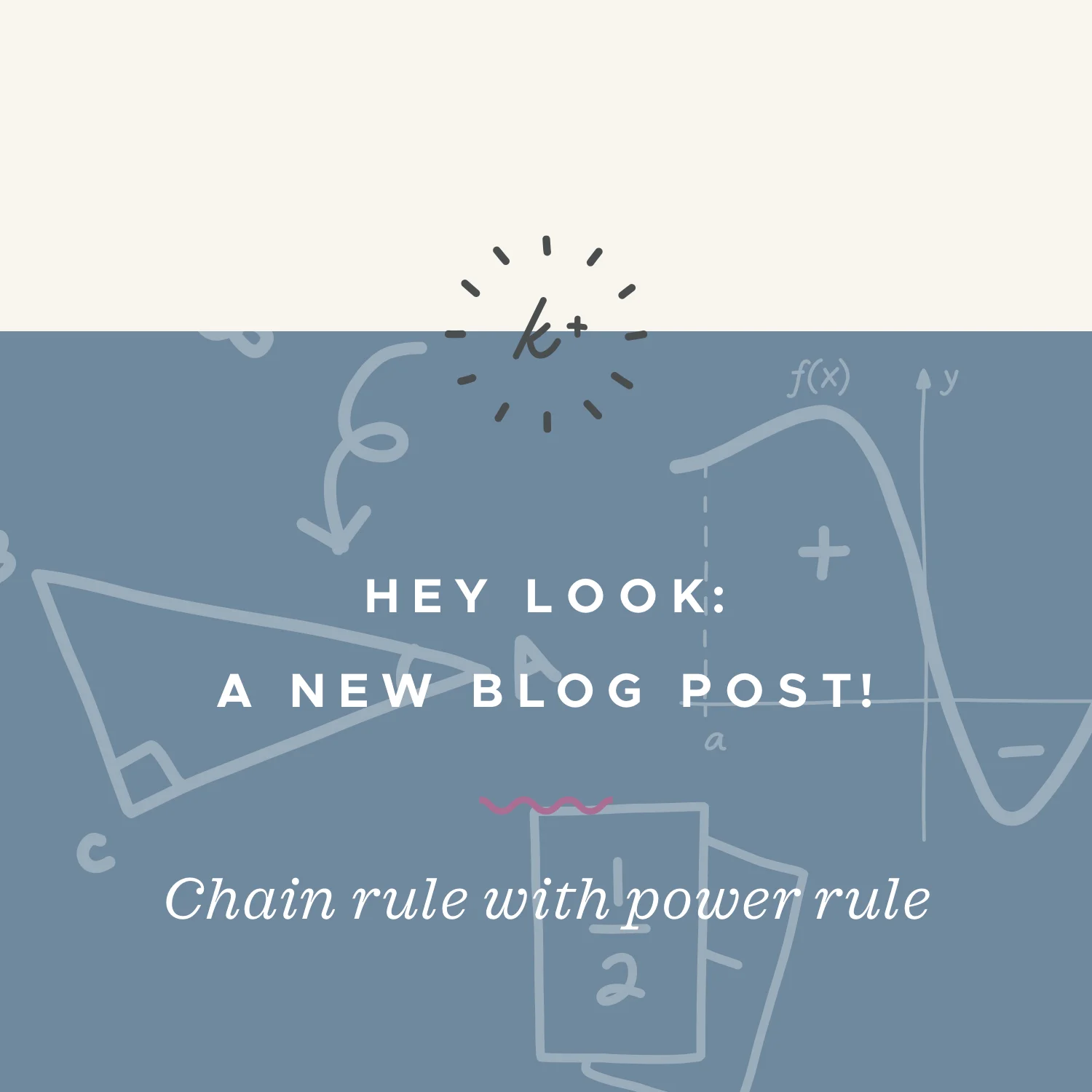Rolle’s Theorem can prove all of the following: 1) The existence of a horizontal tangent line in the interval, 2) A point at which the derivative is 0 in the interval, 3) The existence of a critical point in the interval, and 4) A point at which the function changes direction in the interval, either from increasing to decreasing, or from decreasing to increasing.
Read MoreChain rule is also often used with quotient rule. In other words, we always use the quotient rule to take the derivative of rational functions, but sometimes we’ll need to apply chain rule as well when parts of that rational function require it. Let’s look at an example of how these two derivative rules would be used together.
Read MoreFortunately, the derivatives of the hyperbolic functions are really similar to the derivatives of trig functions, so they’ll be pretty easy for us to remember. We only see a difference between the two when it comes to the derivative of cosine vs. the derivative of hyperbolic cosine.
Read MoreLinear approximation is a useful tool because it allows us to estimate values on a curved graph (difficult to calculate), using values on a line (easy to calculate) that happens to be close by. If we want to calculate the value of the curved graph at a particular point, but we don’t know the equation of the curved graph, we can draw a line that’s tangent to the curved graph at the point we’re interested in. Remember that “tangent to the graph” means that the line barely skims the graph and touches it at only one point.
Read MoreRemember that we’ll use implicit differentiation to take the first derivative, and then use implicit differentiation again to take the derivative of the first derivative to find the second derivative. Once we have an equation for the second derivative, we can always make a substitution for y, since we already found y' when we found the first derivative.
Read MoreL’Hospital’s Rule is used to get you out of sticky situations with indeterminate limit forms. If you plug in the number you’re approaching to the function for which you’re trying to find the limit and your result is one of the indeterminate forms above, you should try applying L’Hospital’s Rule.
Read MoreTo solve a related rates problem, complete the following steps: 1) Construct an equation containing all the relevant variables. 2) Differentiate the entire equation with respect to (time), before plugging in any of the values you know. 3) Plug in all the values you know, leaving only the one you’re solving for. 4) Solve for your unknown variable.
Read MoreFor example, these are all things we can find by applying the optimization process to the real world: the dimensions of a rectangle that maximize or minimize its area or perimeter, the maximum product or minimum sum of squares of two real numbers, the time at which velocity or acceleration is maximized or minimized, the dimensions that maximize or minimize the surface area or volume of a three-dimensional figure, the production or sales level that maximizes profit, etc.
Read MoreVertical motion is any type of upwards or downwards motion that is constant. In a vertical motion problem, you may be asked about instantaneous velocity, and/or average velocity. To solve for instantaneous velocity we will need to take the derivative of our position function.
Read MoreJust as we always use the product rule when two variable expressions are multiplied, we always use the quotient rule whenever two variable expressions are divided. So to find the derivative of a quotient, we use the quotient rule.
Read MoreTo build our inverse hyperbolic functions, we need to know how to find the inverse of a function in general. To find the inverse of a function, we reverse the x and the y in the function. So for y=cosh(x), the inverse function would be x=cosh(y).
Read MoreIn order to model sales decline with the exponential decay equation, the decline must have a constantly and exponentially rate of decline. If it does, we can use our standard exponential change equation.
Read MoreIf you tried to solve the limit with substitution and it didn’t work, factoring should be the next thing you try. The goal will be to factor the function, and then cancel any removable discontinuities, in order to simplify the function, so that it can be evaluated.
Read MoreThe chain rule is often one of the hardest concepts for calculus students to understand. It’s also one of the most important, and it’s used all the time, so make sure you don’t leave this section without a solid understanding.
Read MoreThe derivatives of base-10 logs and natural logs follow a simple derivative formula that we can use to differentiate them. With derivatives of logarithmic functions, it’s always important to apply chain rule and multiply by the derivative of the log’s argument.
Read MoreWhen a problem asks you to find the equation of the tangent line, you’ll always be asked to evaluate at the point where the tangent line intersects the graph. You’ll need to find the derivative, and evaluate at the given point.
Read MoreGiven that the numerator is a constant and the denominator is any function, the derivative will be the negative constant, multiplied by the derivative of the denominator divided by the square of the denominator.
Read More


















